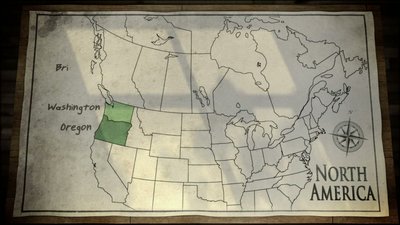
Posts: 11990
-
Karma: 12,273
From Wikipedia, the free encyclopedia
Page semi-protected
"Irish potato" redirects here. For the confectionery, see Irish potato candy.
For other uses, see Potato (disambiguation).
Potato
Potato cultivars appear in a huge variety of colors, shapes, and sizes
Scientific classification
Kingdom: Plantae
(unranked): Angiosperms
(unranked): Eudicots
(unranked): Asterids
Order: Solanales
Family: Solanaceae
Genus: Solanum
Species: S. tuberosum
Binomial name
Solanum tuberosum
L.
The potato is a starchy, tuberous crop from the perennial Solanum tuberosum of the Solanaceae family (also known as the nightshades). The word potato may refer to the plant itself as well as the edible tuber. In the region of the Andes, there are some other closely related cultivated potato species. Potatoes were first introduced outside the Andes region four centuries ago, and have become an integral part of much of the world's cuisine. It is the world's fourth-largest food crop, following rice, wheat, and maize.[1] Long-term storage of potatoes requires specialised care in cold warehouses.[2]
Wild potato species occur throughout the Americas, from the United States to Uruguay.[3] The potato was originally believed to have been domesticated independently in multiple locations,[4] but later genetic testing of the wide variety of cultivars and wild species proved a single origin for potatoes in the area of present-day southern Peru (from a species in the Solanum brevicaule complex), where they were domesticated 7,000–10,000 years ago.[5][6][7] Following centuries of selective breeding, there are now over a thousand different types of potatoes.[6] Of these subspecies, a variety that at one point grew in the Chiloé Archipelago (the potato's south-central Chilean sub-center of origin) left its germplasm on over 99% of the cultivated potatoes worldwide.[8][9]
Following the Spanish conquest of the Inca Empire, the Spanish introduced the potato to Europe in the second half of the 16th century. The staple was subsequently conveyed by European mariners to territories and ports throughout the world. The potato was slow to be adopted by distrustful European farmers, but soon enough it became an important food staple and field crop that played a major role in the European 19th century population boom.[7] However, lack of genetic diversity, due to the very limited number of varieties initially introduced, left the crop vulnerable to disease. In 1845, a plant disease known as late blight, caused by the fungus-like oomycete Phytophthora infestans, spread rapidly through the poorer communities of western Ireland, resulting in the crop failures that led to the Great Irish Famine. Nonetheless, thousands of varieties persist in the Andes, where over 100 cultivars might be found in a single valley, and a dozen or more might be maintained by a single agricultural household.[10]
The annual diet of an average global citizen in the first decade of the 21st century included about 33 kg (73 lb) of potato.[1] However, the local importance of potato is extremely variable and rapidly changing. It remains an essential crop in Europe (especially eastern and central Europe), where per capita production is still the highest in the world, but the most rapid expansion over the past few decades has occurred in southern and eastern Asia. China is now the world's largest potato-producing country, and nearly a third of the world's potatoes are harvested in China and India.[11]
Contents
[hide]
1 Etymology
2 Characteristics
3 Genetics
4 History
4.1 Peru
4.2 Europe
4.3 Africa
4.4 Asia
4.5 US and Canada
5 Role in world food supply
6 Nutrition
6.1 Toxicity
7 Growth and cultivation
7.1 Storage
7.2 Varieties
8 Health
9 Uses
9.1 Culinary uses
10 Art
11 See also
12 Notes
13 References
14 Further reading
15 External links
Etymology
"Spud" redirects here. For other uses, see Spud (disambiguation).
The English word potato comes from Spanish patata (the name used in Spain). The Spanish Royal Academy says the Spanish word is a compound of the Taino batata (sweet potato) and the Quechua papa (potato).[12] The name potato originally referred to a type of sweet potato rather than the other way around, although there is actually no close relationship between the two plants. The English confused the two plants one for the other. In many of the chronicles detailing agriculture and plants, no distinction is made between the two.[13] The 16th-century English herbalist John Gerard used the terms "bastard potatoes" and "Virginia potatoes" for this species, and referred to sweet potatoes as "common potatoes".[14] Potatoes are occasionally referred to as "Irish potatoes" or "white potatoes" in the United States, to distinguish them from sweet potatoes.[14]
The name spud for a small potato comes from the digging of soil (or a hole) prior to the planting of potatoes. The word has an unknown origin and was originally (c. 1440) used as a term for a short knife or dagger, probably related to Dutch spyd and/or the Latin "spad-" root meaning "sword"; cf. Spanish "espada", English "spade" and "spadroon". The word spud traces back to the 16th century. It subsequently transferred over to a variety of digging tools. Around 1845 it transferred over to the tuber itself.[15] The origin of "spud" has erroneously been attributed to a 19th century activist group dedicated to keeping the potato out of Britain, calling itself The Society for the Prevention of an Unwholesome Diet.[15] It was Mario Pei's 1949 The Story of Language that can be blamed for the false origin. Pei writes, "the potato, for its part, was in disrepute some centuries ago. Some Englishmen who did not fancy potatoes formed a Society for the Prevention of Unwholesome Diet. The initials of the main words in this title gave rise to spud." Like most other pre-20th century acronymic origins, this one is false.[15]
Characteristics
Flowers of a potato plant
Russet potatoes with sprouts
Potato plants are herbaceous perennials that grow about 60 cm (24 in) high, depending on variety, the culms dying back after flowering. They bear white, pink, red, blue, or purple flowers with yellow stamens. In general, the tubers of varieties with white flowers have white skins, while those of varieties with colored flowers tend to have pinkish skins.[16] Potatoes are cross-pollinated mostly by insects, including bumblebees, which carry pollen from other potato plants, but a substantial amount of self-fertilizing occurs as well. Tubers form in response to decreasing day length, although this tendency has been minimized in commercial varieties.[17]
Potato plants
After potato plants flower, some varieties produce small green fruits that resemble green cherry tomatoes, each containing up to 300 true seeds. Potato fruit contains large amounts of the toxic alkaloid solanine and is therefore unsuitable for consumption. All new potato varieties are grown from seeds, also called "true seed" or "botanical seed" to distinguish it from seed tubers. By finely chopping the fruit and soaking it in water, the seeds separate from the flesh by sinking to the bottom after about a day (the remnants of the fruit float). Any potato variety can also be propagated vegetatively by planting tubers, pieces of tubers, cut to include at least one or two eyes, or also by cuttings, a practice used in greenhouses for the production of healthy seed tubers. Some commercial potato varieties do not produce seeds at all (they bear imperfect flowers) and are propagated only from tuber pieces. Confusingly, these tubers or tuber pieces are called "seed potatoes".
Genetics
There are about five thousand potato varieties worldwide. Three thousand of them are found in the Andes alone, mainly in Peru, Bolivia, Ecuador, Chile, and Colombia. They belong to eight or nine species, depending on the taxonomic school. Apart from the five thousand cultivated varieties, there are about 200 wild species and subspecies, many of which can be cross-bred with cultivated varieties, which has been done repeatedly to transfer resistances to certain pests and diseases from the gene pool of wild species to the gene pool of cultivated potato species. Genetically modified varieties have met public resistance in the United States and in the European Union.[18][19]
The major species grown worldwide is Solanum tuberosum (a tetraploid with 48 chromosomes), and modern varieties of this species are the most widely cultivated. There are also four diploid species (with 24 chromosomes): S. stenotomum, S. phureja, S. goniocalyx, and S. ajanhuiri. There are two triploid species (with 36 chromosomes): S. chaucha and S. juzepczukii. There is one pentaploid cultivated species (with 60 chromosomes): S. curtilobum. There are two major subspecies of Solanum tuberosum: andigena, or Andean; and tuberosum, or Chilean.[20] The Andean potato is adapted to the short-day conditions prevalent in the mountainous equatorial and tropical regions where it originated. The Chilean potato, native to the Chiloé Archipelago, is adapted to the long-day conditions prevalent in the higher latitude region of southern Chile.[21]
The International Potato Center, based in Lima, Peru, holds an ISO-accredited collection of potato germplasm.[22] The international Potato Genome Sequencing Consortium announced in 2009 that they had achieved a draft sequence of the potato genome.[23] The potato genome contains 12 chromosomes and 860 million base pairs making it a medium-sized plant genome.[24] Above 99 percent of all current varieties of potatoes currently grown are direct descendants of a subspecies that once grew in the lowlands of south-central Chile.[25] Nonetheless, genetic testing of the wide variety of cultivars and wild species affirms that all potato subspecies derive from a single origin in the area of present-day southern Peru (from a species in the Solanum brevicaule complex).[5][6][7]
Most modern potatoes grown in North America arrived through European settlement and not independently from the South American sources. However, at least one wild potato species, Solanum fendleri, is found as far north as Texas and used in breeding for resistance to a nematode species that attacks cultivated potatoes. A secondary center of genetic variability of the potato is Mexico, where important wild species that have been used extensively in modern breeding are found, such as the hexaploid Solanum demissum, as a source of resistance to the devastating late blight disease. Another relative native to this region, Solanum bulbocastanum, has been used to genetically engineer the potato to resist potato blight.[26]
Potatoes yield abundantly with little effort, and adapt readily to diverse climates as long as the climate is cool and moist enough for the plants to gather sufficient water from the soil to form the starchy tubers. Potatoes do not keep very well in storage and are vulnerable to molds that feed on the stored tubers, quickly turning them rotten. By contrast, grain can be stored for several years without much risk of rotting.[27]
History
Peru
Potato ceramic from the Moche culture, from the Larco Museum Collection.
The potato originated in the region of southern Peru.[5] Potatoes were first domesticated in Peru between 8000 BC and 5000 BC.[6] In the Altiplano, potatoes provided the principal energy source for the Inca Empire, its predecessors, and its Spanish successor. In Peru above 10,000 feet altitude, tubers exposed to the cold night air turned into chuño; when kept in permanently frozen underground storehouses, chuño can be stored for years with no loss of nutritional value. The Spanish fed chuño to the silver miners who produced vast wealth in the 16th century for the Spanish government.[6]
Europe
 chaitea
chaitea Mr.Bishop
Mr.Bishop Mr.Huck
Mr.Huck Mr.Panda
Mr.Panda Mr_pretzel
Mr_pretzel P3t3r
P3t3r PASKIINGSUCKS
PASKIINGSUCKS sander_h
sander_h TechnoPotamus
TechnoPotamus Tim_Thomas
Tim_Thomas saxon$$
Dirty.Harry.$
freestyler540$
JTL$
SlugInfinite$
Alf_Alfa$
amo$
andrewmeehan$
ashley.$
Bar_Down$
bigbomber517$
BuSkiz$
grams.$
I_Am_Mod$
J.D.$
loganimlach$
Newschool_Pope$
SkierX$
TwigSki$
yelsel$
AR6rider$
azzybish$
Banane.$
BROSEIDON$
EastCoastPride$
FlyingSpoon$
godbout$
G_Koke$
K.haas$
Master_Debater$
PrairieSteeze$
schmooey.$
Se7en$
Shoe.$
skiRay$
Slowbro$
Spacekroft$
StillBlazin$
TOAST.$
Toasty.$
Travapple.$
Vincent_R$
W.Ameron$
Wesley.P$
Yinzer$
Zump.$
_._$
**S-Crew**
*Nickdel*
..Jesus..
.Olie.
.travis.
1.2.3-A.B.Ste...
206
206newschooler.
472guggie
4frntballa
978productions
A.lars
akarlsen
Akenz
AlexC
aquinn
ath1337
A_Wall
b.e.z.
b.rantz
bfulmer
Billieivy
Bittner
blakroc
Blazejevski
boardz11
Bogusteeze
BrandenBilodeau
Brenner
butterslut.
C-BO
C-DAWGSTYLEZ
C-S
cct_222
cferg
ClintKasten
codizzle
Colbs
colleenator
condog16
Coxworth
CREASTON
cubsillini43
dales
DavidHonda.
Derek_S
dfortin13
dirtyLURGZZ
dresserski
dubaiski
Dunnah
DW.
f-town.bum
fahdoc
farmskier
Fink
flashbang
flatland
Flying~Squirrel
fnacke
fr4nt167
freeskier2233
GavinW
geebs97
generalski
geteducated
Greenfield*
gregorio
GrindEdit
happyscit
headbudprod
henki95
Henry
illmoney
iSwag
jamers
Jamez179
jamie26
Jane6
Jenseriks
JESSE.
JibUrNut
JoaoFR
jojje3
Jooky
joshua
jpfreeskier900
jump_jib_repeat
Justo8484
JWoods
kabozo101
Karmitian1362
Kellyshaheen
king.tubby
kollins
Kubidou
KushLover
Landon-Dick
LifeSteezeMedia
LoganD
lylaz=]
MACAQUE
Mac_Grey
MagicMan13
mango-fruit
mgraham
MikeWalsh
MILES_93
Min_Soo
Morginsfreeski
mountaineypoop
Nessi123
nighthawk1
Not_A_Mod
Nufity
O-A_s
OHIO
paal96
peyow
Phisherman
Piepieman00o
Pinnacle_peter
PON3
PopsicleStand
Potatoes
professormitt...
Rejkjaer
rhskier029
RickAstley
rmathis10
RussellK141
S.Ki
SA18
SaLSaL
SARTRON
saskskierftw
scott_range
scratchskier321
sean_reilly
seward
SFBv420.0
SilenceBreaker
Sir_SkrillALot
ski4freee
skierdale226
skimonster23
skipowdersmooth
Skrilla
Slaveowner
Slizger
Slowstyle
Smuffy
snowballsdeep
Special*K
stoggieman
StrlngC
Tastyhorsemeat
terror
theBearJew
ThePROfessor
tinkytwinky
ToothDecay
Torjusleiknes
TWoods
tyberesk
u86hc
W...
WackTV
west-coast
willgums
YMR
YoungDaysMedia
youngfreddie
Yuhui
zaidel
~bagelz~
saxon$$
Dirty.Harry.$
freestyler540$
JTL$
SlugInfinite$
Alf_Alfa$
amo$
andrewmeehan$
ashley.$
Bar_Down$
bigbomber517$
BuSkiz$
grams.$
I_Am_Mod$
J.D.$
loganimlach$
Newschool_Pope$
SkierX$
TwigSki$
yelsel$
AR6rider$
azzybish$
Banane.$
BROSEIDON$
EastCoastPride$
FlyingSpoon$
godbout$
G_Koke$
K.haas$
Master_Debater$
PrairieSteeze$
schmooey.$
Se7en$
Shoe.$
skiRay$
Slowbro$
Spacekroft$
StillBlazin$
TOAST.$
Toasty.$
Travapple.$
Vincent_R$
W.Ameron$
Wesley.P$
Yinzer$
Zump.$
_._$
**S-Crew**
*Nickdel*
..Jesus..
.Olie.
.travis.
1.2.3-A.B.Ste...
206
206newschooler.
472guggie
4frntballa
978productions
A.lars
akarlsen
Akenz
AlexC
aquinn
ath1337
A_Wall
b.e.z.
b.rantz
bfulmer
Billieivy
Bittner
blakroc
Blazejevski
boardz11
Bogusteeze
BrandenBilodeau
Brenner
butterslut.
C-BO
C-DAWGSTYLEZ
C-S
cct_222
cferg
ClintKasten
codizzle
Colbs
colleenator
condog16
Coxworth
CREASTON
cubsillini43
dales
DavidHonda.
Derek_S
dfortin13
dirtyLURGZZ
dresserski
dubaiski
Dunnah
DW.
f-town.bum
fahdoc
farmskier
Fink
flashbang
flatland
Flying~Squirrel
fnacke
fr4nt167
freeskier2233
GavinW
geebs97
generalski
geteducated
Greenfield*
gregorio
GrindEdit
happyscit
headbudprod
henki95
Henry
illmoney
iSwag
jamers
Jamez179
jamie26
Jane6
Jenseriks
JESSE.
JibUrNut
JoaoFR
jojje3
Jooky
joshua
jpfreeskier900
jump_jib_repeat
Justo8484
JWoods
kabozo101
Karmitian1362
Kellyshaheen
king.tubby
kollins
Kubidou
KushLover
Landon-Dick
LifeSteezeMedia
LoganD
lylaz=]
MACAQUE
Mac_Grey
MagicMan13
mango-fruit
mgraham
MikeWalsh
MILES_93
Min_Soo
Morginsfreeski
mountaineypoop
Nessi123
nighthawk1
Not_A_Mod
Nufity
O-A_s
OHIO
paal96
peyow
Phisherman
Piepieman00o
Pinnacle_peter
PON3
PopsicleStand
Potatoes
professormitt...
Rejkjaer
rhskier029
RickAstley
rmathis10
RussellK141
S.Ki
SA18
SaLSaL
SARTRON
saskskierftw
scott_range
scratchskier321
sean_reilly
seward
SFBv420.0
SilenceBreaker
Sir_SkrillALot
ski4freee
skierdale226
skimonster23
skipowdersmooth
Skrilla
Slaveowner
Slizger
Slowstyle
Smuffy
snowballsdeep
Special*K
stoggieman
StrlngC
Tastyhorsemeat
terror
theBearJew
ThePROfessor
tinkytwinky
ToothDecay
Torjusleiknes
TWoods
tyberesk
u86hc
W...
WackTV
west-coast
willgums
YMR
YoungDaysMedia
youngfreddie
Yuhui
zaidel
~bagelz~
 chaitea
chaitea Mr.Bishop
Mr.Bishop Mr.Huck
Mr.Huck Mr.Panda
Mr.Panda Mr_pretzel
Mr_pretzel P3t3r
P3t3r PASKIINGSUCKS
PASKIINGSUCKS sander_h
sander_h TechnoPotamus
TechnoPotamus Tim_Thomas
Tim_Thomas saxon$$
Dirty.Harry.$
freestyler540$
JTL$
SlugInfinite$
Alf_Alfa$
amo$
andrewmeehan$
ashley.$
Bar_Down$
bigbomber517$
BuSkiz$
grams.$
I_Am_Mod$
J.D.$
loganimlach$
Newschool_Pope$
SkierX$
TwigSki$
yelsel$
AR6rider$
azzybish$
Banane.$
BROSEIDON$
EastCoastPride$
FlyingSpoon$
godbout$
G_Koke$
K.haas$
Master_Debater$
PrairieSteeze$
schmooey.$
Se7en$
Shoe.$
skiRay$
Slowbro$
Spacekroft$
StillBlazin$
TOAST.$
Toasty.$
Travapple.$
Vincent_R$
W.Ameron$
Wesley.P$
Yinzer$
Zump.$
_._$
**S-Crew**
*Nickdel*
..Jesus..
.Olie.
.travis.
1.2.3-A.B.Ste...
206
206newschooler.
472guggie
4frntballa
978productions
A.lars
akarlsen
Akenz
AlexC
aquinn
ath1337
A_Wall
b.e.z.
b.rantz
bfulmer
Billieivy
Bittner
blakroc
Blazejevski
boardz11
Bogusteeze
BrandenBilodeau
Brenner
butterslut.
C-BO
C-DAWGSTYLEZ
C-S
cct_222
cferg
ClintKasten
codizzle
Colbs
colleenator
condog16
Coxworth
CREASTON
cubsillini43
dales
DavidHonda.
Derek_S
dfortin13
dirtyLURGZZ
dresserski
dubaiski
Dunnah
DW.
f-town.bum
fahdoc
farmskier
Fink
flashbang
flatland
Flying~Squirrel
fnacke
fr4nt167
freeskier2233
GavinW
geebs97
generalski
geteducated
Greenfield*
gregorio
GrindEdit
happyscit
headbudprod
henki95
Henry
illmoney
iSwag
jamers
Jamez179
jamie26
Jane6
Jenseriks
JESSE.
JibUrNut
JoaoFR
jojje3
Jooky
joshua
jpfreeskier900
jump_jib_repeat
Justo8484
JWoods
kabozo101
Karmitian1362
Kellyshaheen
king.tubby
kollins
Kubidou
KushLover
Landon-Dick
LifeSteezeMedia
LoganD
lylaz=]
MACAQUE
Mac_Grey
MagicMan13
mango-fruit
mgraham
MikeWalsh
MILES_93
Min_Soo
Morginsfreeski
mountaineypoop
Nessi123
nighthawk1
Not_A_Mod
Nufity
O-A_s
OHIO
paal96
peyow
Phisherman
Piepieman00o
Pinnacle_peter
PON3
PopsicleStand
Potatoes
professormitt...
Rejkjaer
rhskier029
RickAstley
rmathis10
RussellK141
S.Ki
SA18
SaLSaL
SARTRON
saskskierftw
scott_range
scratchskier321
sean_reilly
seward
SFBv420.0
SilenceBreaker
Sir_SkrillALot
ski4freee
skierdale226
skimonster23
skipowdersmooth
Skrilla
Slaveowner
Slizger
Slowstyle
Smuffy
snowballsdeep
Special*K
stoggieman
StrlngC
Tastyhorsemeat
terror
theBearJew
ThePROfessor
tinkytwinky
ToothDecay
Torjusleiknes
TWoods
tyberesk
u86hc
W...
WackTV
west-coast
willgums
YMR
YoungDaysMedia
youngfreddie
Yuhui
zaidel
~bagelz~
saxon$$
Dirty.Harry.$
freestyler540$
JTL$
SlugInfinite$
Alf_Alfa$
amo$
andrewmeehan$
ashley.$
Bar_Down$
bigbomber517$
BuSkiz$
grams.$
I_Am_Mod$
J.D.$
loganimlach$
Newschool_Pope$
SkierX$
TwigSki$
yelsel$
AR6rider$
azzybish$
Banane.$
BROSEIDON$
EastCoastPride$
FlyingSpoon$
godbout$
G_Koke$
K.haas$
Master_Debater$
PrairieSteeze$
schmooey.$
Se7en$
Shoe.$
skiRay$
Slowbro$
Spacekroft$
StillBlazin$
TOAST.$
Toasty.$
Travapple.$
Vincent_R$
W.Ameron$
Wesley.P$
Yinzer$
Zump.$
_._$
**S-Crew**
*Nickdel*
..Jesus..
.Olie.
.travis.
1.2.3-A.B.Ste...
206
206newschooler.
472guggie
4frntballa
978productions
A.lars
akarlsen
Akenz
AlexC
aquinn
ath1337
A_Wall
b.e.z.
b.rantz
bfulmer
Billieivy
Bittner
blakroc
Blazejevski
boardz11
Bogusteeze
BrandenBilodeau
Brenner
butterslut.
C-BO
C-DAWGSTYLEZ
C-S
cct_222
cferg
ClintKasten
codizzle
Colbs
colleenator
condog16
Coxworth
CREASTON
cubsillini43
dales
DavidHonda.
Derek_S
dfortin13
dirtyLURGZZ
dresserski
dubaiski
Dunnah
DW.
f-town.bum
fahdoc
farmskier
Fink
flashbang
flatland
Flying~Squirrel
fnacke
fr4nt167
freeskier2233
GavinW
geebs97
generalski
geteducated
Greenfield*
gregorio
GrindEdit
happyscit
headbudprod
henki95
Henry
illmoney
iSwag
jamers
Jamez179
jamie26
Jane6
Jenseriks
JESSE.
JibUrNut
JoaoFR
jojje3
Jooky
joshua
jpfreeskier900
jump_jib_repeat
Justo8484
JWoods
kabozo101
Karmitian1362
Kellyshaheen
king.tubby
kollins
Kubidou
KushLover
Landon-Dick
LifeSteezeMedia
LoganD
lylaz=]
MACAQUE
Mac_Grey
MagicMan13
mango-fruit
mgraham
MikeWalsh
MILES_93
Min_Soo
Morginsfreeski
mountaineypoop
Nessi123
nighthawk1
Not_A_Mod
Nufity
O-A_s
OHIO
paal96
peyow
Phisherman
Piepieman00o
Pinnacle_peter
PON3
PopsicleStand
Potatoes
professormitt...
Rejkjaer
rhskier029
RickAstley
rmathis10
RussellK141
S.Ki
SA18
SaLSaL
SARTRON
saskskierftw
scott_range
scratchskier321
sean_reilly
seward
SFBv420.0
SilenceBreaker
Sir_SkrillALot
ski4freee
skierdale226
skimonster23
skipowdersmooth
Skrilla
Slaveowner
Slizger
Slowstyle
Smuffy
snowballsdeep
Special*K
stoggieman
StrlngC
Tastyhorsemeat
terror
theBearJew
ThePROfessor
tinkytwinky
ToothDecay
Torjusleiknes
TWoods
tyberesk
u86hc
W...
WackTV
west-coast
willgums
YMR
YoungDaysMedia
youngfreddie
Yuhui
zaidel
~bagelz~












 HTML > BODY >
HTML > BODY > 

























